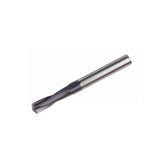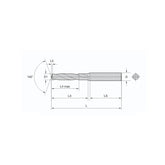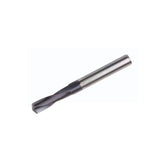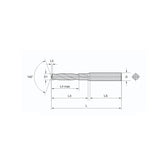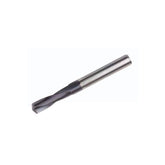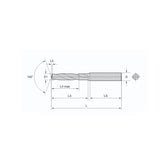Introduction to Carbide Drill Tip Types and Groove Cross-Sections
Types of Drill Bit Tips and Groove Cross-Sections for Carbide Drill Bits
1. Types of Carbide Drill Bits

Comparison of different carbide drill bit types
2. Groove Cross-Section

Groove cross-section designs and their impact on drilling performance
1. Chip Removal Efficiency
Good groove design ensures chips are removed smoothly, preventing the drill bit from overheating or getting stuck, especially important in deep hole drilling. Research shows that optimized grooves (such as parabolic grooves) can significantly improve chip removal capability and reduce drilling resistance.
2. Rigidity and Stability of the Drill Bit
Groove design affects the core diameter and rigidity of the drill bit. A larger core diameter can improve the stability of the drill bit, reducing the risk of bending or breaking in deep hole drilling, but it may reduce the space for chips. Parabolic grooves provide better chip removal performance while maintaining high rigidity.
3. Cutting Efficiency and Thrust Force
The helix angle and shape of the groove affect cutting resistance. Higher helix angles are suitable for softer materials, reducing cutting resistance, but may reduce the rigidity of the cutting edge; lower helix angles are more suitable for hard materials. Optimized designs (such as R-thinning) can reduce drilling thrust force by 25-40%, improving efficiency.
4. Quality of the Hole
Groove design directly affects the surface quality, roundness, and accuracy of the hole. Good groove design ensures smooth hole walls, reduces hole expansion and spiral phenomena, especially prominent in deep hole drilling.
